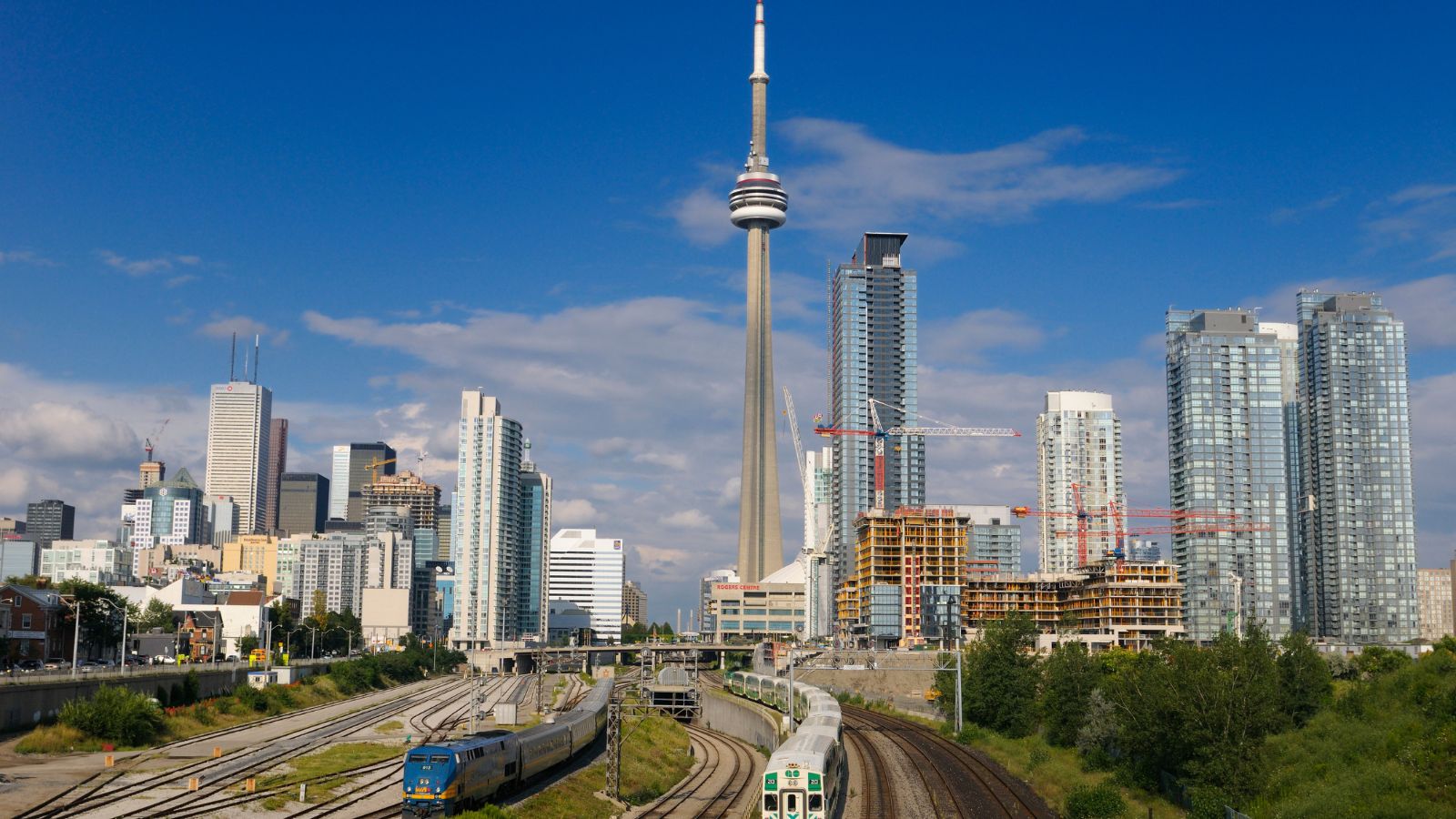Whether it’s economic resilience, social policy innovation, or international reputation, Canada has been making quiet but meaningful progress. While the U.S. remains a global powerhouse, it also faces rising polarization, policy instability, and internal friction, making comparisons with Canada more compelling than ever. Here are 19 areas where Canada currently offers stronger foundations than the USA.
Stable Political Landscape

Canada’s political system, while not immune to partisanship, tends to avoid the gridlock often seen in the U.S. Federal elections are brief and publicly funded, which helps keep political discourse relatively civil. The structure of Canada’s parliamentary system also enables quicker legislative action, while its Supreme Court is viewed as more impartial. In contrast, America’s partisan divisions have led to legislative paralysis, judicial controversies, and frequent government shutdowns.
Universal Healthcare Access

Canada’s single-payer healthcare system ensures all residents have access to essential medical services. While wait times for elective procedures remain an issue, no one is denied care due to lack of insurance. This contrasts sharply with the U.S., where healthcare remains a significant cause of personal bankruptcy, and millions remain uninsured or underinsured. Canada’s approach leads to better preventative care outcomes and a healthier population overall.
Lower Gun Violence Rates

Canada has significantly lower rates of gun violence compared to the U.S., owing mainly to stricter gun laws and a different gun culture. Comprehensive background checks, mandatory training, and the requirement to justify the need for a firearm contribute to lower firearm-related deaths. The contrast is stark: Canada’s gun homicide rate is a fraction of that in the U.S. This makes Canadian cities comparatively safer, fostering more secure communities and stable social environments. Public trust in safety institutions is higher as a result.
Stronger Banking System

Financial institutions in Canada are among the world’s most stable. The country’s banking regulations prevented Canadian banks from collapsing during the 2008 global financial crisis, a sharp contrast to the U.S., where dozens of banks failed. Canadian banks are tightly regulated and well-capitalized, operating under a conservative lending model. The World Economic Forum and IMF have also routinely ranked Canada’s banks among the soundest globally.
Global Reputation and Soft Power

Canada enjoys a favorable global image, often ranked highly in international reputation indexes. Its foreign policy is generally viewed as balanced and non-aggressive, fostering strong diplomatic relationships worldwide. Canadian passports offer high mobility, and the country is often seen as a peacekeeping nation. In contrast, the U.S. faces criticism for military interventions and inconsistent foreign policy. Canada’s soft power enhances its global influence, particularly in multilateral institutions such as the UN and WTO, where it’s viewed as a constructive actor.
Better Pandemic Response Infrastructure

The country’s handling of the COVID-19 pandemic, though not perfect, was more coordinated and transparent than in the U.S. Public trust in health institutions remained relatively high, and vaccination rates were among the highest globally. The healthcare system adapted quickly, and despite its challenges, federal-provincial coordination outperformed the state-federal fragmentation seen in the U.S. Moreover, Canada used data and scientific advice more consistently in policy decisions.
Lower Income Inequality

Canada has managed to maintain a more balanced income distribution than the U.S. due to progressive taxation and stronger social safety nets. Programs such as the Canada Child Benefit and universal healthcare help alleviate the burden on low-income families. The Gini coefficient, a standard measure of inequality, is lower in Canada, indicating a more equitable distribution of wealth. This not only fosters social stability but also supports long-term economic growth by ensuring broader consumer participation in the economy.
Accessible Higher Education

Post-secondary education in Canada is more affordable and accessible than in the U.S. Tuition fees are lower, and public universities are well-funded. Additionally, provincial grants and federal loans make it easier for students to finance their education without incurring massive debt. In the U.S., student loan debt is a significant issue, burdening graduates for decades. Canada’s approach to education helps foster upward mobility and ensures a better-educated workforce, positioning the country well for knowledge-based economic growth.
Stronger Environmental Policies

Canada has implemented a national carbon pricing plan and is committed to achieving net-zero emissions by 2050. While implementation gaps exist, the country is far ahead of the U.S. in adopting a coordinated climate change strategy. The U.S. approach remains fragmented due to state-level differences and federal reversals depending on the administration. Canada’s investments in clean energy, electric vehicle incentives, and conservation efforts underscore its long-term sustainability vision, making it more attractive for green investors and eco-conscious citizens.
Immigrant-Friendly Policies

Canada has consistently high immigration targets and a robust points-based immigration system that prioritizes skills and integration, ensuring a seamless process for newcomers. Immigrants receive support in the form of language training, settlement programs, and access to public healthcare. In contrast, the U.S. has seen more polarized debates and policy uncertainty surrounding immigration. Canada’s immigrant-inclusive approach has helped counter population aging, filled labor shortages, and contributed positively to economic and cultural vibrancy.
Lower Incarceration Rates

In Canada, criminal justice policy encourages alternatives to incarceration, such as probation, restorative justice programs, and community service, particularly for non-violent offenses. This approach contrasts sharply with the U.S., where mandatory minimum sentences and privatized prisons contribute to the world’s highest incarceration rate. The social and economic costs of mass incarceration in the U.S. are staggering. At the same time, Canada’s system facilitates better reintegration into society, reduces recidivism, and enables more effective long-term public safety strategies.
Affordable Urban Living (Relatively Speaking)

Although Canada is not immune to housing challenges, its cities generally offer a better quality of life at a lower cost compared to many major U.S. urban centers. Factors such as universal healthcare, subsidized education, and stronger public services reduce the burden on Canadian residents, even in higher-cost cities like Toronto and Vancouver. Meanwhile, mid-sized cities such as Edmonton, Halifax, and Saskatoon present compelling alternatives with lower housing costs and increasing economic opportunities.
Safer Political Discourse

The country hasn’t faced events comparable to the January 6 Capitol riot or widespread voter suppression accusations. Canadian elections, while occasionally contentious, are regulated by stricter campaign finance laws and feature shorter election cycles, reducing the intensity and duration of political polarization. Hate groups and extremist rhetoric exist, but they remain a fringe phenomenon compared to the mainstream platforms some enjoy in the U.S. This relative civility fosters a healthier democratic environment, where public trust in institutions is less eroded.
Strong Indigenous Rights Framework

Landmark court rulings have acknowledged Indigenous land rights, and the government has committed to implementing recommendations from the Truth and Reconciliation Commission. Indigenous languages and cultures are receiving greater recognition in education and media. Though many challenges remain, including access to clean water and adequate housing, there is at least a nationally acknowledged path forward. In contrast, U.S. federal policy often falls short in addressing the needs and rights of Native American communities.
Modern Public Transit Development

Federal funding initiatives in Canada have supported projects such as Toronto’s Ontario Line, Montreal’s REM network, and Calgary’s Green Line LRT. These investments reflect a long-term strategy aimed at promoting environmentally sustainable mobility and reducing traffic congestion. In contrast, many U.S. cities struggle to maintain or expand transit systems due to political resistance and inconsistent funding. Additionally, Canada’s national support for public transit makes commuting more efficient, particularly in cities experiencing rapid population growth. Improved public transit not only boosts productivity but also reduces carbon emissions.
Credible Media Landscape

Canadian media institutions benefit from a relatively high level of public trust and accountability. The existence of strong public broadcasters, such as CBC and Radio-Canada, ensures that journalistic standards are upheld and coverage is more balanced. Regulatory bodies, such as the CRTC, monitor media compliance with ethical guidelines. Unlike the U.S., where polarized media ecosystems and misinformation campaigns dominate parts of the media landscape, Canada has fewer partisan news outlets and more unified national narratives.
Resilient Supply Chains

Canada’s response to post-pandemic supply chain vulnerabilities has been proactive. The federal government has invested in domestic manufacturing capabilities, including pharmaceuticals, PPE, and semiconductors. Strategic partnerships with allies have also been strengthened to diversify trade routes and reduce reliance on single-source suppliers, such as China. And, while the U.S. is pursuing similar goals, its efforts are often hindered by political gridlock and trade tensions. Canada’s geographic access to Atlantic and Pacific ports, coupled with strong trade agreements like CETA and CPTPP, positions it well for long-term supply chain resilience and agility.
Less Military Interventionism

Canada’s foreign policy is less focused on military intervention and more on peacekeeping, multilateralism, and humanitarian aid. Canadian forces are actively engaged in NATO and UN missions, but generally avoid unilateral military actions. This approach not only saves on military spending but also enhances Canada’s image as a neutral and constructive global partner. In contrast, the U.S. maintains a sprawling global military presence, which can provoke anti-American sentiment and drain national resources. Canada’s diplomatic style helps maintain global relationships and makes it a more trusted actor in conflict resolution.
Greater Gender Equality

Canada scores higher than the U.S. on most global gender equity indices, primarily due to its more substantial institutional commitments and social policies. Federally mandated paid parental leave, gender parity initiatives in government appointments, and programs addressing wage disparity have created more equitable professional environments. Women are better represented in Parliament and senior civil service roles than in the U.S. Support for childcare, eldercare, and protections against gender-based violence is integrated into national strategies.
21 Products Canadians Should Stockpile Before Tariffs Hit

If trade tensions escalate between Canada and the U.S., everyday essentials can suddenly disappear or skyrocket in price. Products like pantry basics and tech must-haves that depend on are deeply tied to cross-border supply chains and are likely to face various kinds of disruptions
21 Products Canadians Should Stockpile Before Tariffs Hit
